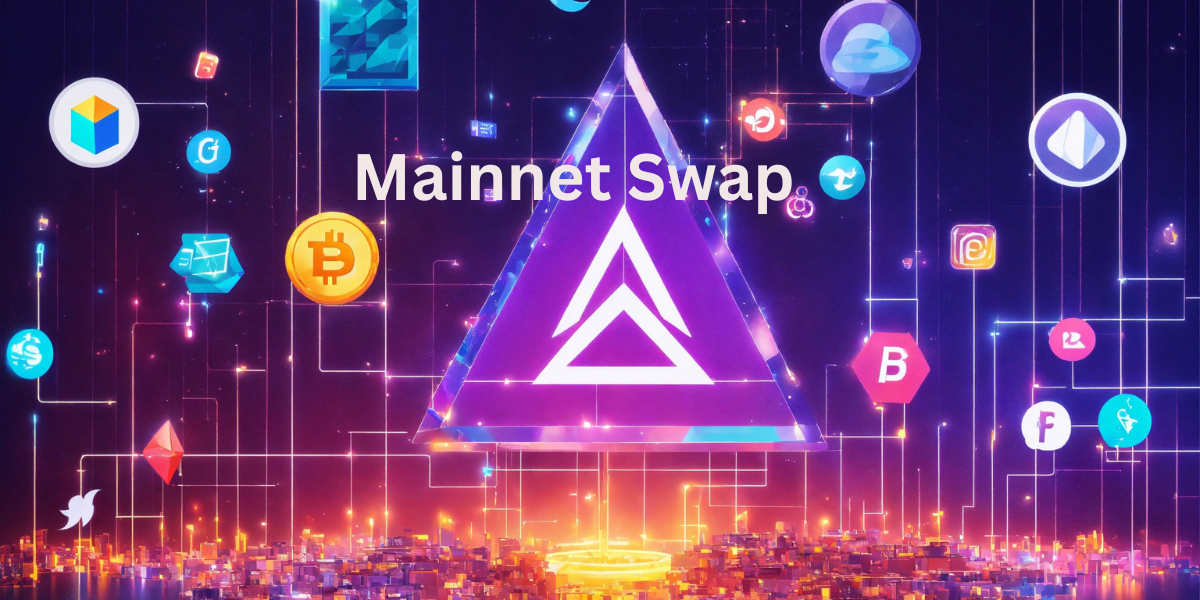Mainnet Swap: Unraveling the Mainnet Swap Phenomenon
What’s a Mainnet Swap?
Mainnet Swap:A cryptocurrency project’s relocation from a third-party blockchain network, like Ethereum, to its native blockchain network is known as a mainnet switch.
When a cryptocurrency project is in the testnet phase, it uses a third-party blockchain network. However, users receive native cryptocurrency in return for their third-party tokens when it transitions from the testnet to the mainnet phase. It is also known as token migration or token shift for this reason. The fundamental function of the mainnet swap is to swap third-party tokens for the platform’s own coin.
Better Knowledge of Mainnet Swap
ELF has been used as an Ethereum-based #ERC-20 token since 2017. On September 9, 2021, they announced the mainnet changeover after spending a lot of time verifying the platform’s dependability and security. The mainnet swap usually has a 1:1 ratio. The tokens that remain once it has been finished on the whole blockchain are burned.
Binance Coin, or #BNB, is a another illustration of a mainnet swap. Binance Chain used the Ethereum-based ERC-20 BNB coin throughout its testnet phase. Holders of #ERC-20 BNB tokens were urged to switch to the BEP2 BNB coin, Binance’s native coin, following the mainnet launch. Because of this 1:1 swap, one ERC-20 #BNB currency was worth one #BEP2 #0000000d BNB coin.
unique aspect of mainnet swaps:
In some cases, mainnet swaps can also involve significant changes or upgrades to the underlying technology of a blockchain network. These upgrades might include improvements to the consensus mechanism, governance structures, or even fundamental changes to the protocol itself.
For example, a mainnet swap could coincide with the implementation of a new consensus algorithm designed to enhance scalability, security, or decentralization. This could involve transitioning from a proof-of-work (PoW) to a proof-of-stake (PoS) consensus mechanism, or adopting a novel consensus mechanism altogether, such as delegated proof-of-stake (DPoS) or proof-of-authority (PoA).
Additionally, mainnet swaps may introduce new features or functionalities to the blockchain network, such as support for smart contracts, interoperability with other blockchains, or enhanced privacy features.
These technical enhancements and upgrades are often a critical aspect of mainnet swaps, as they signify the maturation and evolution of the blockchain project. However, they also require careful planning, testing, and coordination to ensure a smooth transition for users and maintain network security and stability.
Therefore, when participating in a mainnet swap, it’s essential for token holders to not only follow the instructions provided for the token migration but also to stay informed about any underlying technical changes or upgrades that may impact their usage of the blockchain network.
When Does a Mainnet Swap Take Place?
Mainnet swaps represent significant shifts in cryptocurrency projects, involving transitions between blockchains or protocols. While commonly associated with new blockchain launches or migrations, they entail broader transformations. Projects may swap when transitioning protocols, as seen in migrating tokens from Bitcoin-based to Ethereum, showing mainnet swaps’ adaptability. Execution varies, with deadlines for token migration common. Missing deadlines can lead to token loss as tokens are usually burned. This ensures timely migration, safeguarding the ecosystem’s integrity and functionality.
How Do We Complete the Swap?
Tokens can be manually switched by users or left to the platform, depending on the primary aspects of execution. Tokens that had previously been issued might be left on accounts with Binance, for instance, and the platform would automatically replace them with native tokens instead.
The swap process typically involves several steps:
1. Announcement
The cryptocurrency project announces the swap and provides details on how users can participate. This includes information on timing, instructions, and any requirements.
2. Token Preparation
Users need to ensure they have their tokens ready for the swap. This may involve transferring tokens from exchanges to personal wallets or preparing them in any other specified manner.
3. Swap Mechanism
The project usually provides a mechanism for the swap. This could be a smart contract, a swap interface on their website, or instructions for manual swaps.
4. Submission
Users follow the provided instructions to submit their tokens for the swap. This typically involves sending tokens to a specified address or interacting with the swap mechanism provided.
5. Verification
Once tokens are submitted, the project verifies the transactions to ensure they meet the swap requirements. This may include checking for the correct amount of tokens sent and adherence to any deadlines.
6. Token Distribution
After verification, the project distributes the new tokens to users. This could involve minting new tokens on the new blockchain or allocating existing tokens from a reserve.
7. Confirmation
Users receive confirmation of the swap completion along with any relevant details, such as transaction IDs or updated token balances.
8. Burn Mechanism
In some cases, the old tokens on the original blockchain may be burned or rendered unusable to prevent double-spending and ensure the integrity of the swap process.
9. Support
Throughout the process, the project typically provides support to address any issues or questions users may have regarding the swap.
conclusion:
Mainnet swaps are critical milestones in cryptocurrency projects, marking transitions between blockchains or protocols. These swaps signify broader transformations and often coincide with significant technological upgrades. By actively participating in the swap process, users contribute to the project’s evolution and ensure the integrity of the ecosystem.
